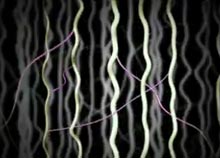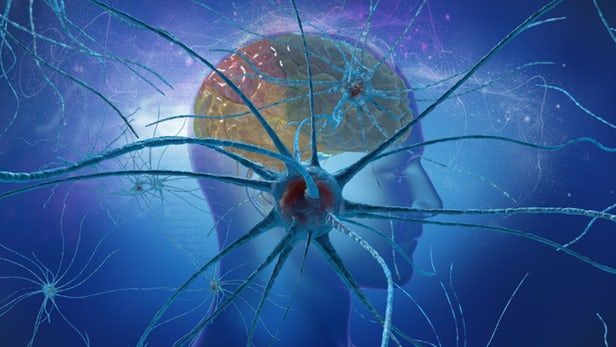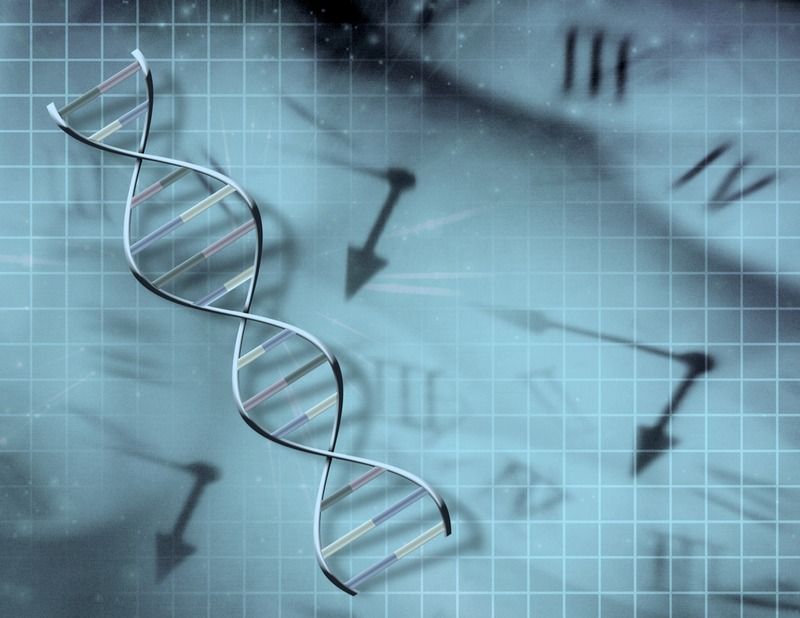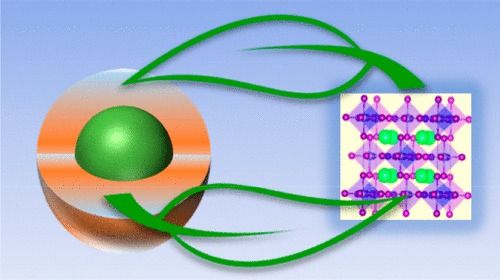Circa 2018
Scientists say 1cu cm of the material won’t break under the weight of 800 tonnes.


Lighter than air! Stronger than steel! More flexible than rubber! No, it’s not an upcoming superhero flick: It’s the latest marvelous formulation of carbon nanotubes–at least as reported by the creators of the new super-material. Researchers working on artificial muscles say they’ve created nanotech ribbons that make our human muscles look puny by comparison. The ribbons, which are made of long, entangled 11-nanometer-thick nanotubes, can stretch to more than three times their normal width but are stiffer and stronger than steel… They can expand and contract thousands of times and withstand temperatures ranging from −190 to over 1,600 °C. What’s more, they are almost as light as air, and are transparent, conductive, and flexible [Technology Review].
The material is made from bundles of vertically aligned nanotubes that respond directly to electricity. Lengthwise, the muscle can expand and contract with tremendous speed; from side-to-side, it’s super-stiff. Its possibilities may only be limited by the imaginations of engineers. [The material’s composition] “is akin to having diamond-like behavior in one direction, and rubber-like behavior in the others” [Wired], says material scientist John Madden, who wasn’t involved in the research.
When voltage is applied to the material, the nanotubes become charged and push each other away, causing the material to expand at a rate of 37,000 percent per second, tripling its width. That’s 10 times as far and 1000 times as fast as natural muscle can move, and the material does so while generating 30 times as much force as a natural muscle [IEEE Spectrum]. The researchers put together a video to illustrate the concept, and will publish their work in Science tomorrow.


Beam Me Down
Needless to say, the biggest problem for a floating power plant is figuring out how to get the energy back down to Earth.
The scientists behind the project are still sorting that part out. But right now, the plan is to have solar arrays in space capture light from the sun and then beam electricity down to a facility on Earth in the form of a microwave or a laser, according to The Sydney Morning Herald.


The Mars Gravitational Area will give 30% of earths gravity to our guests for those who choose not to travel to the red planet. The MGA have 4–5 decks and will be the only area offering permanent habitation on the Gateway.
Reset Learn More

Researchers at the Harvard T.H. Chan School of Public Health have discovered a new aging clock that can accurately determine both chronological and biological age in a wide variety of species.
Aging and the nucleolus
There are two kinds of age: chronological age, which is strictly the number of years that something has lived, and biological age, which is influenced by diet, exercise, environment, and similar factors. Biological age is the superior measure of true age and is an accurate predictor of all-cause mortality.

Despite the young age of the research field, substantial progress has been made in the study of metal halide perovskite nanocrystals (HPNCs). Just as their thin-film counterparts are used for light absorption in solar cells, they are on the way to revolutionizing research on novel chromophores for light emission applications. Exciting physics arising from their peculiar structural, electronic, and excitonic properties are being discovered with breathtaking speed. Many things we have learned from the study of conventional semiconductor quantum dots (CSQDs) of II–VI (e.g., CdSe), IV–VI (e.g., PbS), and III–V (e.g., InP) compounds have to be thought over, as HPNCs behave differently. This Feature Article compares both families of nanocrystals and then focuses on approaches for substituting toxic heavy metals without sacrificing the unique optical properties as well as on surface coating strategies for enhancing the long-term stability.
In the early 1980s the quest for novel photocatalysts, fueled by the oil crisis in the preceding decade, led to the discovery of semiconductor quantum dots. Pioneering works by Efros, Brus, and Henglein showed both experimentally and theoretically that the reduction of size of semiconductor particles (e.g., CdS) down to the nanometer range induces a significant change in their band gap energy.(1−3) The underlying quantum confinement effect, occurring when the nanocrystal size is (significantly) smaller than twice the exciton Bohr radius of the semiconductor material (Table 1), leads to an increase, scaling with 1/r, of the band gap energy. It also gives rise to the appearance of discrete energy levels at the place of continuous valence and conduction energy bands. In the same period Ekimov as well as Itoh and co-workers observed quantum confinement in small CuCl crystallites embedded in a glass or a NaCl matrix.
Medicine is a unique and intensive four-day experience that gathers world-class faculty, innovators and organizations from across the biomedical and technology spectrum to explore and leverage the convergence of fast moving technologies in the reinvention of health and medicine.
Our home in San Diego at the iconic Hotel del Coronado is the magic X-factor in building connections and catalyzing deeper-than-usual conversation among faculty and participants. We make full use of one of America’s most beautiful seaside resorts; its history beautifully complements the future-focus of Exponential Medicine.
From talks given in a custom-designed theater with multiple configurations for listening and idea generation, to our hands-on technology lab, beachside morning yoga, dinners, and bonfires—Exponential Medicine is a high energy, bold redesign of a medical conference.